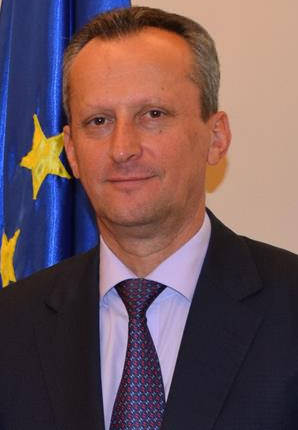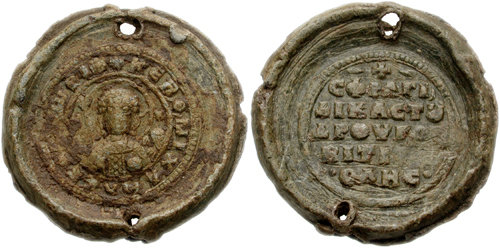|
Debarca
Debarca or Drembica () is a historical region in western North Macedonia, north of Ohrid and south-west of Kičevo. Its territory is now divided between Debarca Municipality and Kičevo Municipality. History A region known as Drembica, Deb'rca, or Debritsa is attested as an early medieval diocese in the region of Macedonia. It is still debatable whether this is the Sclaveni of the Draguvites or whether the name does not refer to this South Slavic tribe around Thessaloniki. In historical sources Drembica is mentioned together with Velica. Notable people * Trajko Veljanovski Trajko Veljanovski (born 2 November 1962) is a Macedonian politician who was the President of the Assembly of North Macedonia from 2008 to 2017. He was graduated from Ss. Cyril and Methodius University working as a lawyer until 1999. Politics ... (born in Slivovo), former President of the Assembly of North Macedonia. References Geography of North Macedonia Debarca Municipality Kičevo M ... [...More Info...] [...Related Items...] OR: [Wikipedia] [Google] [Baidu] |
Debarca Municipality
Debarca ( mk, ) is a municipality in the Southwestern Statistical Region of North Macedonia. The village of Belčišta is the municipal seat. It is the municipality in which Ohrid "St. Paul the Apostle" Airport is located, the second of two international airports in the county. Geography The municipality borders Kičevo Municipality to the northeast, Demir Hisar Municipality to the east, Ohrid Municipality to the south, and Struga Municipality Municipality of Struga ( mk, Струга, translit=Struga, sq, Strugë) is a municipality in western North Macedonia. ''Struga'' is also the name of the town where the municipal seat is found. Struga Municipality is part of the Southwestern Sta ... to the west. The municipality encompasses the Debarca Valley, part of the Sateska River watershed that flows into Lake Ohrid and belongs to the Lake Ohrid Drainage Basin. The majority of the villages are nestled between the Karaorman Mountain in the west and Ilinska Mountain in the east. ... [...More Info...] [...Related Items...] OR: [Wikipedia] [Google] [Baidu] |
Slivovo, Debarca
Slivovo ( mk, Сливово) is a small village in the municipality of Debarca, North Macedonia. It used to be part of the former municipality of Belčišta Belčišta ( mk, Белчишта) is a village in the municipality of Debarca, North Macedonia. It used to be municipality of its own. It is the municipality center of Debarca municipality. Demographics According to the 2002 census, the village .... Demographics According to the census of 2002, the village has a population of 16, all Macedonians. References [...More Info...] [...Related Items...] OR: [Wikipedia] [Google] [Baidu] |
Debarca In Macedonia
Debarca or Drembica () is a historical region in western North Macedonia, north of Ohrid and south-west of Kičevo. Its territory is now divided between Debarca Municipality and Kičevo Municipality. History A region known as Drembica, Deb'rca, or Debritsa is attested as an early medieval diocese in the region of Macedonia. It is still debatable whether this is the Sclaveni of the Draguvites or whether the name does not refer to this South Slavic tribe around Thessaloniki. In historical sources Drembica is mentioned together with Velica. Notable people * Trajko Veljanovski Trajko Veljanovski (born 2 November 1962) is a Macedonian politician who was the President of the Assembly of North Macedonia from 2008 to 2017. He was graduated from Ss. Cyril and Methodius University working as a lawyer until 1999. Politics ... (born in Slivovo), former President of the Assembly of North Macedonia. References Geography of North Macedonia Debarca Municipality Kičevo M ... [...More Info...] [...Related Items...] OR: [Wikipedia] [Google] [Baidu] |
Ohrid
Ohrid ( mk, Охрид ) is a city in North Macedonia and is the seat of the Ohrid Municipality. It is the largest city on Lake Ohrid and the eighth-largest city in the country, with the municipality recording a population of over 42,000 inhabitants as of 2002. Ohrid is known for once having 365 churches, one for each day of the year, and has been referred to as a "Jerusalem of the Balkans"."The Mirror of the Macedonian Spirit, Zlate Petrovski, Sašo Talevski, Napredok, 2004, , page 72: "... and Macedonia in the Cathedral Church St. Sofia in the Macedonian Jerusalem — Ohrid..." The city is rich in picturesque houses and monuments, and tourism is predominant. It is located southwest of Skopje, west of Resen and Bitola. In 1979 and in 1980 respectively, Ohrid and Lake Ohrid were accepted as Cultural and Natural World Heritage Sites by UNESCO. Ohrid is one of only 28 sites that are part of UNESCO's World Heritage that are Cultural as well as Natural sites. Name In a ... [...More Info...] [...Related Items...] OR: [Wikipedia] [Google] [Baidu] |
Kičevo Municipality
Kičevo Municipality ( mk, Кичево; sq, Kërçovë) is a municipality in the western part of North Macedonia. The municipal seat is the city of Kičevo. Kičevo Municipality is located in the Southwestern Statistical Region. Geography The municipality borders Mavrovo and Rostuša Municipality to the northwest, Debar Municipality to the west, Gostivar Municipality to the north, Makedonski Brod and Plasnica municipalities to the east, Demir Hisar Municipality to the south, and Debarca Municipality to the southwest. Demographics According to the last national census from 2002 the municipality, prior to territorial adjustments in 2013, had 30,138 inhabitants. Ethnic groups in the municipality included: *Macedonians = 16,140 (53.6%) *Albanians = 9,202 (30.5%) *Turks = 2,430 (8.1%) *Roma = 1,630 (5.4%) *others. Following the territorial adjustments in March 2013, the municipalities of Drugovo, Vraneštica Vraneštica ( mk, ) is a village in the municipality of Kičevo, ... [...More Info...] [...Related Items...] OR: [Wikipedia] [Google] [Baidu] |
Thessaloniki
Thessaloniki (; el, Θεσσαλονίκη, , also known as Thessalonica (), Saloniki, or Salonica (), is the second-largest city in Greece, with over one million inhabitants in its Thessaloniki metropolitan area, metropolitan area, and the capital city, capital of the geographic regions of Greece, geographic region of Macedonia (Greece), Macedonia, the administrative regions of Greece, administrative region of Central Macedonia and the Decentralized Administration of Macedonia and Thrace. It is also known in Greek language, Greek as (), literally "the co-capital", a reference to its historical status as the () or "co-reigning" city of the Byzantine Empire alongside Constantinople. Thessaloniki is located on the Thermaic Gulf, at the northwest corner of the Aegean Sea. It is bounded on the west by the delta of the Vardar, Axios. The Thessaloniki (municipality), municipality of Thessaloniki, the historical center, had a population of 317,778 in 2021, while the Thessaloniki metro ... [...More Info...] [...Related Items...] OR: [Wikipedia] [Google] [Baidu] |
Trajko Veljanovski
Trajko Veljanovski (born 2 November 1962) is a Macedonian politician who was the President of the Assembly of North Macedonia from 2008 to 2017. He was graduated from Ss. Cyril and Methodius University working as a lawyer until 1999. Politics He started in politics in 1993 by joining VMRO-DPMNE. He was elected Under-Secretary in the Ministry of Justice in the Macedonian Parliament in 1999, then became Deputy Minister in the same ministry. In the 2006 elections he was elected Member of the Assembly. In the 2008 elections he was re-elected and became the Speaker of the Macedonian parliament. Arrest and conviction for the Macedonian Parliament storming On 2019, Veljanoski was arrested and questioned for his role in the 2017 storming of Macedonian Parliament Storming of the Macedonian Parliament, also known as Bloody Thursday ( mk, Крвав четврток, Krvav četvrtok) occurred on 27 April 2017, when about 200 Macedonian nationalists (some of whom were members a ... [...More Info...] [...Related Items...] OR: [Wikipedia] [Google] [Baidu] |
Sclaveni
The ' (in Latin) or ' (various forms in Greek, see below) were early Slavic tribes that raided, invaded and settled the Balkans in the Early Middle Ages and eventually became the progenitors of modern South Slavs. They were mentioned by early Byzantine chroniclers as barbarians having appeared at the Byzantine borders along with the Antes (East Slavs), another Slavic group. The Sclaveni were differentiated from the Antes and Wends (West Slavs); however, they were described as kin. Eventually, most South Slavic tribes accepted Byzantine or Frankish suzerainty, and came under their cultural influences and Chalcedonian Christianity. The term was widely used as general catch-all term until the emergence of separate tribal names by the 10th century. Customs The Sclaveni had similar if not identical customs and culture as the Antes. They were carefully described by chroniclers such as Procopius and Maurice, whose works contribute greatly to our understanding of these two Early Slav ... [...More Info...] [...Related Items...] OR: [Wikipedia] [Google] [Baidu] |
South Slavs
South Slavs are Slavic peoples who speak South Slavic languages and inhabit a contiguous region of Southeast Europe comprising the eastern Alps and the Balkan Peninsula. Geographically separated from the West Slavs and East Slavs by Austria, Hungary, Romania, and the Black Sea, the South Slavs today include Bosniaks, Bulgarians, Croats, Macedonians, Montenegrins, Serbs, and Slovenes, respectively the main populations of Bosnia and Herzegovina, Bulgaria, Croatia, North Macedonia, Montenegro, Serbia, and Slovenia. In the 20th century, the country of Yugoslavia (from Serbo-Croatian, literally meaning "South Slavia" or "South Slavdom") united majority of South Slavic peoples and lands—with the exception of Bulgarians and Bulgaria—into a single state. The Pan-Slavic concept of ''Yugoslavia'' emerged in the late 17th century Croatia, at the time party of Habsburg Monarchy, and gained prominence through the 19th-century Illyrian movement. The Kingdom of Serbs, Croats and Sl ... [...More Info...] [...Related Items...] OR: [Wikipedia] [Google] [Baidu] |
Draguvites
The Drougoubitai, also Drogobitai or Dragobitai ( gr, Δρο ��ο ��ῖται/Δραγοβῖται), variously anglicized as Drugubites, Drogubites, Druguvites, Draguvites etc., were a South Slavic group (''Sclaveni'') who settled in the Balkans in the 7th century. Two distinct branches are mentioned in the sources, one living in medieval Macedonia to the north and east of Thessalonica and around Veroia (in modern Greece). History The 7th-century ''Miracles of Saint Demetrius'', which chronicle the Slavic invasions and settlement in the Balkans, list the first branch of the Drougoubitai along with four other Sclaveni tribes living in the vicinity of Thessalonica. According to the ''Miracles'', they were led by kings, and were tributary allies to the Byzantines.Kazhdan (1991), p. 662 The ''Miracles'' also record their participation in two unsuccessful attacks by Sclaveni coalitions on Thessalonica, in 617/618 and 677. By 879, a bishopric of Drougoubiteia (Δρουγουβιτε� ... [...More Info...] [...Related Items...] OR: [Wikipedia] [Google] [Baidu] |




